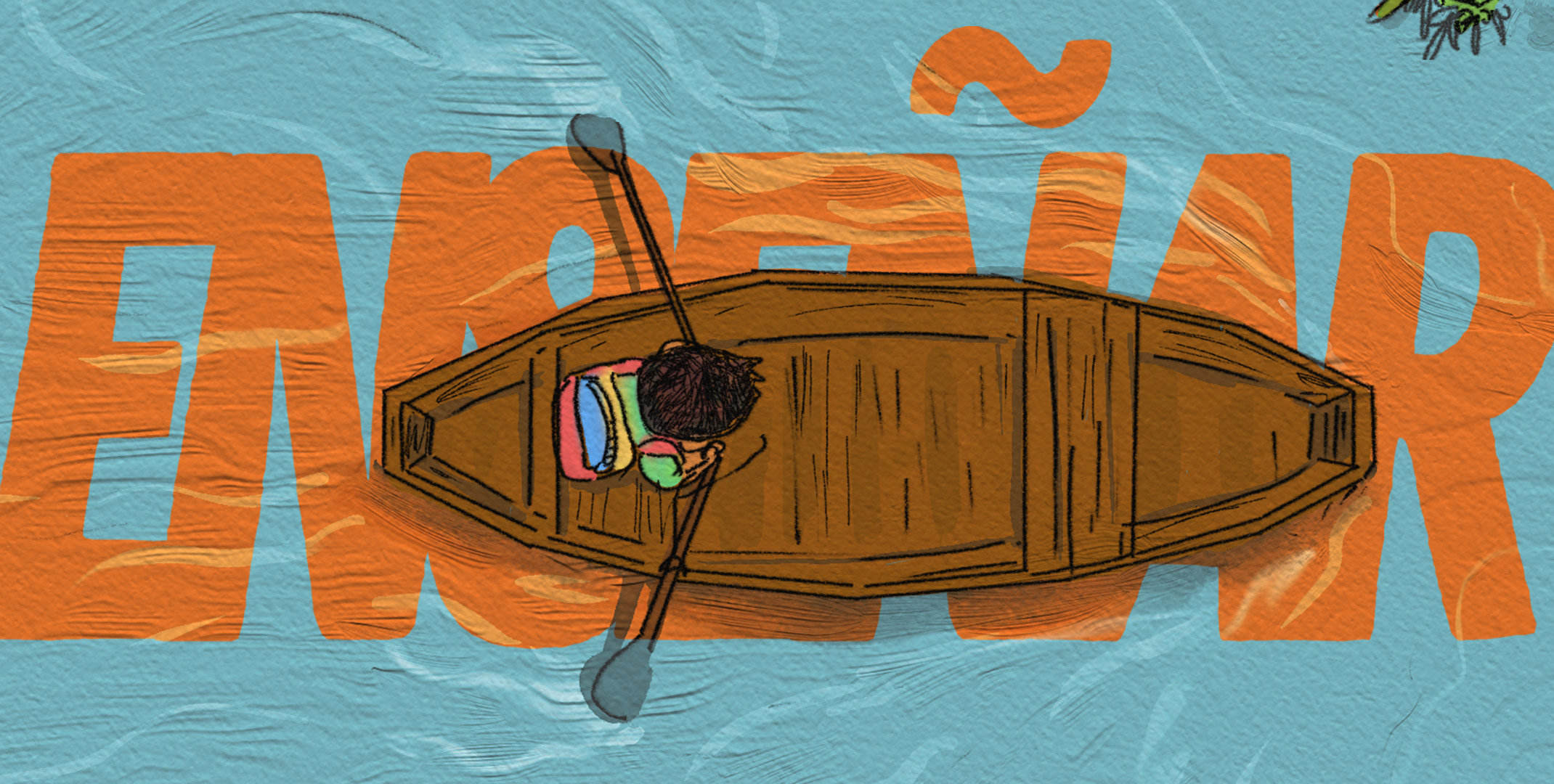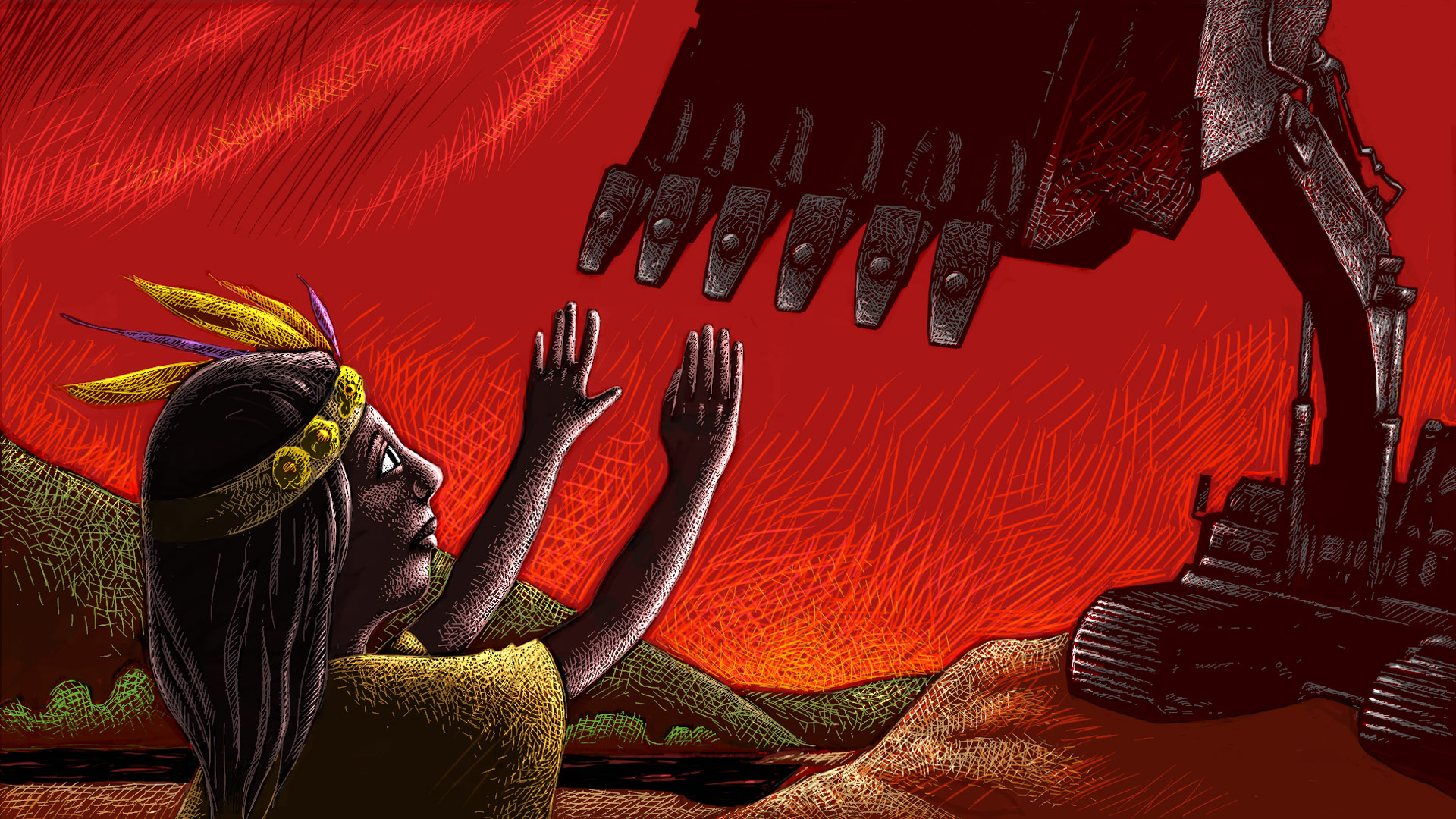Sometimes, he and his grandpa would go out fishing from four in the morning, until six or seven. Or at dusk, when the night was almost falling. It all depended on the fishing spot they chose. One thing was for sure, though: they never came back empty handed because the fishing nets were always laden with fish like bocachico, corita, cotí, manamana, viejita, carpeta, bass, paletón, catfish, tilapia, cachama, guabina, sardine, ojera and doncella. Félix loved fishing and it gave him the greatest joy to sail through that endless water mirror he called home in all its splendor.
Thirty years have passed and there are virtually no fish in the lagoon, for most die from sedimentation and pollution, and the few that survive are not sufficient to feed an ever-growing community. The lagoon is not the same either. As its flow has decreased, the mangrove has gained ground, and the mud from the dragging of the rivers that run into it has left entire channels or caños in complete isolation.

Although the Sinamaica Lagoon is one of the most important water reservoirs in Zulia, and it is the place where the waters of the Limón River and Lake Maracaibo meet, its location across the border has been both a blessing and a curse. According to the Observatory of Political Ecology of Venezuela, the lagoon is a smuggling route for gasoline from Maracaibo to La Guajira, which is then offered for sale in Colombia. Based on their investigations, if the smugglers refuse to hand over the cylindrical pipas with fuel they are seized in the water, the containers are destroyed on the spot by the authorities and all the fuel falls into the lagoon. As per the OPEV report, the illegal business in question is still booming, but Félix says that things have been calmer for about five years now and that, at some point, the smuggling routes shifted from Colombia to Venezuela, and some people from the lagoon still cross to the Colombian side to buy 60 or 70 liters of gasoline for their boats.
In any case, the most striking change that his lagoon has endured is the one brought about by sedimentation and drought, Félix says.
As his grandfather recalled, there was a time when they could fish directly from their stilt huts because the waters were deep enough and there were fish in abundance. When Félix was a kid, the lagoon was more than eight meters deep, but they already had to fish in the marshes, just like they do today. When, at the age of 22, he married his girlfriend —with whom he had two daughters, one a mother herself— his palafito stood over three meters of water. Now the water is not even half a meter deep and is usually murky.
In 2010, the Añú people were severely affected by flooding. Yet, although water still flows through its channels, the lagoon is drying up and running slower, which means that it doesn’t clean as it used to and it gets stuck with and sticks and mud.
The fish also suffer, as their gills clog with sediment and they drown.
Water creatures drowned in mud and dirt, just like the Añú.
The drought also makes it easier for the mangrove seeds to grow into plants as they land directly on the soil, for there is no water acting as a deterrent.The water mirror of his childhood has begun to fade away. When the lagoon falls dry at low tide, the front of his stilt house is nothing but mud.
The Añú use the terms ‘dry tide’ and ‘full tide’ to designate the lagoon’s water level. Tides dictate the activities of the community for the day. If, for example, the tide begins to rise at eight in the morning, the Añú must wait four to five hours for it to be ‘full.’ So, by noon, the water will be deep enough for them to travel. But a full tide only lasts 15 minutes, after which it ebbs in just 45 minutes. And they must wait for it to reach its highest level again. The next day, the tide begins to rise an hour later, and the process goes on and on.
Since Félix is the school’s principal, he gets up at five in the morning and sails away on his cayuco, regardless of how the tide is. As a precaution, depending on the water level, he leaves his boat in a place where it cannot run aground. He completes his tasks and goes back home after two in the afternoon. The children also go to school by cayuco, he adds, but if the palafitos where they live are deep in the lagoon and the tide is very low, they cannot go out because of the mud and must skip school.
There are all kinds of professionals like Félix among the Añú people, from medical doctors to police officers, but some dedicate exclusively to fishing and gathering, and all Añú are taught to fish and gather at an early age, as it is their primary source of food.
Even so, as fish stocks decline, their dietary patterns have changed and they have no choice but to eat the processed food they buy in the markets. And less fishing means less income from fish sales and more poverty.
Félix says that when there are no fish to catch, they pull clams and snails from the water. However, with such large families, what they earn from it is not enough, and malnutrition is spiking.
The Añú people organize parenting around the figure of the grandmother. So, when new families are established, they settle by the main palafito where grandma lives. The Añú are like the mangrove, Félix notes: the offspring falls into the water and is planted in the ground. The professor’s family is small, with only three nuclei. But some groups have more than nine.
Poverty has forced some fishermen to migrate to other coasts. Always by the water, but far from their lagoon.
The dynamics of motherhood has also changed. Although traditionally the Añú women stay home enea weaving, many have had to go out to provide for their families. The younger children are then looked after by the older ones, or by the grandmother. It is a shift in their culture, which adds to the near extinction of their language, one that has been saved by a man who learned it from his grandmother.

Women Elders used to say that the Añú people would exist as long as there was water in the lagoon; otherwise, it would dry up and they would all die. That’s why the community does not leave. And that’s why the Añú still fish and sail and continue to pass on their history to the younger generations.
They love their mother water and their manatees, caimans, babillas, and capybaras; and their herons, flamingoes, ducks and gallinetas; and their flowers and vegetation, and their mangroves, even if they take over the horizon./span>
Félix remembers that the first night he went fishing was like the one when the small creatures aforementioned swam up the lagoon and fell in love: “The lagoon was beautiful. And when the Moon rose, you could see its reflection in the water, like a mirror, as it shed its bright light all over it.”




